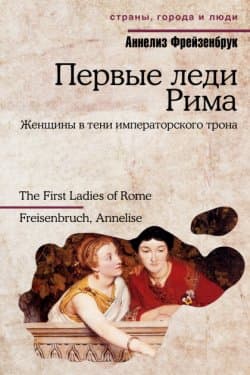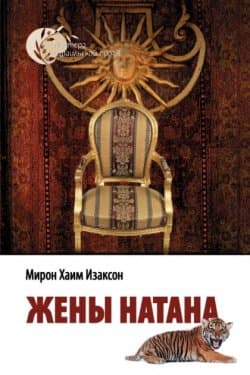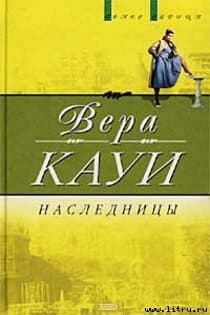Первые леди Рима - Фрейзенбрук Аннелиз
-
Название:Первые леди Рима
-
Автор:
-
Жанр:
-
Язык:Русский
-
Издательство:АСТ
-
Страниц:221
-
Рейтинг:
-
Ваша оценка:
Собственно что ведомо нам о том, кем прежде была данная дама, в случае если осуждать по этому белесому слепку? Ибо данный слепок – все, чем мы располагаем…»
Первые леди Рима - Фрейзенбрук Аннелиз читать онлайн бесплатно полную версию книги
Fishwick, D. (1987-92) The Imperial Cult in the Latin West: Studies in the Ruler Cult of the Western Provinces of the Roman Empire. 2 vols. Leiden.
Fittschen, K. (1996) «Courtly Portraits of Women in the Era of the Adoptive Emperors (AD 98-180) and their Reception in Roman Society», in Kleiner and Matheson (eds.).
Flory, М. B. (1984) «Sic Exempla Parantur: Livia’s Shrine to Concordia and the Porticus Liviae», Historia 33 (1984): 309-30.
Flory, М. B. (1987) «The Meaning of Augusta in the Julio-Claudian Period», American Journal of Ancient History 13.2:113-38.
Flory, М. B. (1988) «Abducta Neroni Uxor: The Historiographical Tradition on the Marriage of Octavian and Livia», Transactions of the America Philological Association 118: 343-59.
Flory, М. B. (1993) «Livia and the History of Public Honorific Statues for Women in Rome», Transactions of the American Philological Association 123: 287–308.
Flory, М. B. (1995) «The Deification of Roman Women», Ancient History Bulletin 9.3:127-34.
Flory, М. B. (1998) «The Integration of Women into the Roman Triumph», Historia 47: 489-94.
Flower, H. I. (2006) The Art of Forgetting: Disgrace and Oblivion in Roman Political Culture. Chapel Hil, NC.
Frakes, R. M. (2006) «The Dynasty of Constantine down to 363», in Lenski (ed.).
Fraschetti, A. (2001) Roman Women, trans. L. Lappin. Chicago and London.
Freisenbruch, A. (2004) «The Correspondence of Marcus Cornelius Fronto». Dissertation, (unpublished). Cambridge.
Frost, H. (1983) «The Nymphaeum at Baiae», International Journal of Nautical Archaeology 12:81-3.
Gabriel, М. M. (1955) Livia’s Garden Room at Prima Porta. New York.
Gardner, J. F. (1986) Women in Roman Law and Society. London.
Garlick, B., Dixon, S. and Allen, P. (eds.) (1992) Stereotypes of Women in Power: Historical Perspectives and Revisionist Views. London and New York.
Ginsburg, J. (2006) Representing Agrippina: Constructions of Female Power in the Early Roman Empire. New York and Oxford.
Goodman, M. (1997) The Roman World 44 BC — AD 180. London.
Gorrie, C. (2004) «Julia Domna’s Building Patronage, Imperial Family Roles and the Severan Revival of Moral Legislation», Historia 53:61–72.
Gradel, I. (2002) Emperor Worship and Roman Religion. Oxford.
Graves, R. (1934) I, Claudius. London.
Griffin, M. (1984) Nero: The End of a Dynasty. London.
Griffin, M. (1997) «The Senate’s Story», Journal of Roman Studies 87: 249-63.
Griffin, M. (2000) «Nerva to Hadrian», in Bowman, Garnsey and Rathbone (eds.).
Hall, L. J. (2004) Roman Berytus: Beirut in Late Antiquity. London.
Hallett, J. P. (1977) «Perusinae Glandes and the Changing Image of Augustus», American Journal of Ancient History 2:151-71.
Hallett, J. P. (1984) Fathers and Daughters in Roman Society: Women and the Elite Family. Princeton.
Hallett, J. P. (2002) «Women Writing in Rome and Cornelia, Mother of the Gracchi», in L.J. Churchill, PR. Brown and J. E. Jeffrey (eds.), Women Writing Latin: From Early Antiquity to Early Modern Europe, Vol. 1. New York and London.
Hamer, M. (1993) Signs of Cleopatra: History, Politics, Representation. London and New York.
Hamer, M. (2001) «The Myth of Cleopatra since the Renaissance», in Walker and Higgs (eds.).
Harbus, A. (2002) Helena of Britain in Medieval Legend. Cambridge.
Harlow, M. (2004a) «Female Dress, Third-Sixth Century: The Messages in the Media?», Antiquit Tardive 12: 203-15.
Harlow, M. (2004b) «Galla Placidia: Conduit of Culture?» in F. McHardy and E. Marshall (eds.), Women’s Influence on Classical Civilization. London and New York.
Haskell, F. and Penny, N. (1981) Taste and the Antique: The Lure of Classical Sculpture, 1500–1900. New Haven, CT and London.
Heather, P. (2005) The Fall of the Roman Empire: A New History. London.

 Мифы Греции и Рима
Мифы Греции и Рима  Жены Натана
Жены Натана  Убийца Шута
Убийца Шута  Диковинные друзья
Диковинные друзья  Ты, как снег на голову
Ты, как снег на голову  Наследницы
Наследницы  Наследник
Наследник  Пир теней
Пир теней  Князь во все времена
Князь во все времена  Когда порвется нить
Когда порвется нить 



